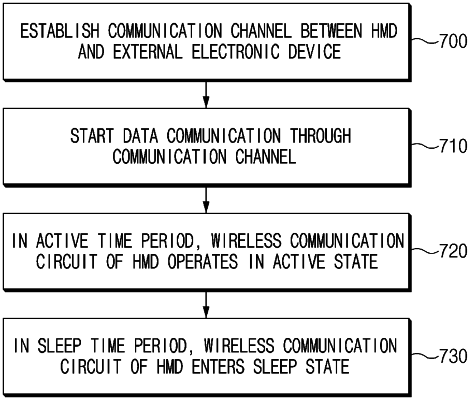| CPC H04W 52/0216 (2013.01) [H04B 1/3883 (2013.01); H04W 28/0268 (2013.01); H04W 52/0235 (2013.01); H04W 76/10 (2018.02); H04W 84/12 (2013.01)] | 20 Claims |

|
1. An electronic device comprising:
a wireless communication circuit; and
at least one processor operatively connected to the wireless communication circuit,
wherein the at least one processor is configured to:
establish a communication channel with an external electronic device by using the wireless communication circuit;
determine a duration of data communication time periods based on a video frame rate of content, wherein the data communication time periods comprise respective active time periods and respective sleep time periods, and wherein the respective active time periods comprise respective uplink periods and respective downlink periods;
control the wireless communication circuit to enter an active state during the respective active time periods;
communicate data with the external electronic device through the communication channel during the respective active time periods, wherein communicating data further comprises:
transmitting information indicative of user movement during each of the respective uplink periods, and
receiving video frames during each of the respective downlink periods, wherein the video frames transmitted during each of the respective downlink periods is based at least in part on the user movement from at least one uplink period occurring prior to the respective downlink periods; and
control the wireless communication circuit to enter a sleep state during the respective sleep time periods.
|